MODULAR OR SELF CONTAINED
As you contemplate starting a food truck business, one of the first questions you may ask is ‘Do I want a food truck or food trailer?’ There are pros and cons to either one. A self-contained unit sounds nice – everything all tied up with a neat bow in one package. But food trucks cost considerably more than a trailer. For the cost of the bare vehicle alone, you could be over half way to completing your trailer. There is also less space for windows in a truck. A trailer gives you a modular design – separating your kitchen from the vehicle mechanicals required to get your kitchen where it needs to be. If your vehicle breaks, simply plug in a different one to get your kitchen there.
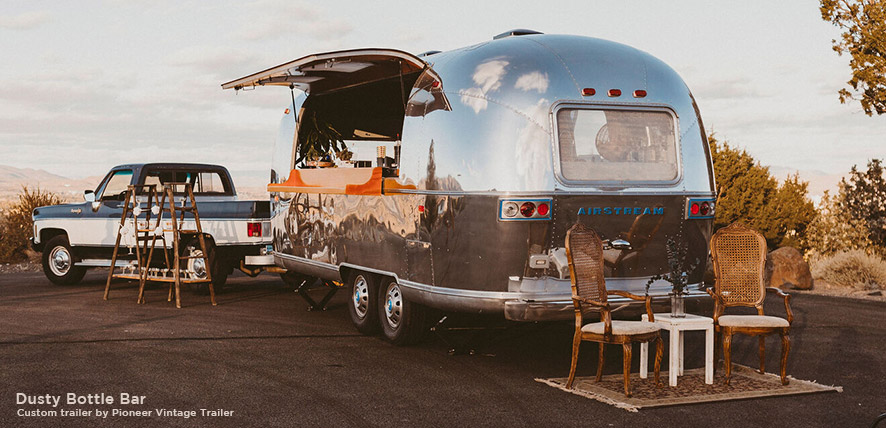
Granted, you will need a tow vehicle for a trailer but you may already have that. Short to mid size trailers can be towed with a 1/2 ton pickup or regular SUV. A tow vehicle can also be used for other things – like making a stocking run for more supplies while the trailer sits at your event still making you money.
This all assumes you are comfortable with pulling a trailer and the abilities required to back it up and maneuver in tight spaces. A food truck will require about the same abilities as driving a motor home. Depending on your abilities, this may or may not be easier when maneuvering around tight city streets.
FOOD TRUCK BREAKS DOWN – NOW WHAT??

I remember watching ‘A Chef’s Life’ on PBS – The documentary TV series following the life of Chef Vivian Howard and her chef husband as they go about the daily business of handling two restaurants, her writing a cookbook, and raising twins. One episode deals with them buying a food truck for traveling and promoting her book. On the way to their first event, the truck breaks down! Of course, me being a trailer person is thinking ‘Gee, if you were in a trailer, all you would need is another pickup to tow it to your gig.’ But they didn’t ask my opinion. So they had to suffer through having someone come and tow the truck for repairs. I believe they made their event but I’m sure it was only because of who she was and there were cameras filming everywhere. She probably got super fast treatment from the repair shop. You or I would not fair so well, I’m sure.
WHO’S GONNA FIX IT?
The mechanical workings of what can fairly be described as a restaurant kitchen on wheels is a complicated setup already. The griddles, fryers, refrigeration, warming trays are just the beginning of it. Electrical requirements can go as high as 220 volt 200 amp service – as much as a normal house. Then add in the multiple sinks with tanks for fresh and gray water, a water pump and water heater.

Now factor in all the mechanicals of a truck – engine, transmission, coolant, brake system, etc. creating a machine that few mechanics would even think about working on. I know of several Airstream restoration shops that won’t even touch an Airstream motor home just because of the complications of multiple systems.
Unless you have a mechanic in your back pocket, you will probably be faced with your repairs being done at a shop specializing in truck repairs. The hourly rate at these shops is also normally much more than your local auto mechanic shop.
SIZE CONSIDERATIONS
This 30 foot Airstream Argosy trailer is the home of a franchise for Umami Burgers in Nassau, Bahamas.

While food trucks are all basically the same size, a trailer – specifically an Airstream trailer – can range in size from a shorty at 16ft. up to a giant 34ft. long. Airstreams are measured from hitch to rear bumper so to figure inside space, subtract 3 to 3-1/2ft. from the length. For the width, Airstreams are typically around 85 to 88 inches wide at the floor depending on the year. An Airstream trailer also flairs out on the sides which gives you an additional 3 to 4 inches on each side at countertop height.
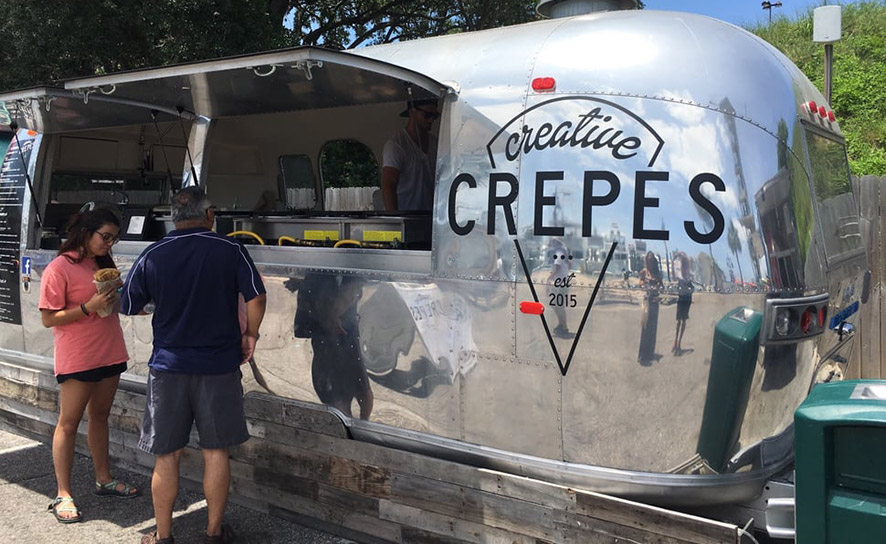
A trailer also sits closer to the ground – putting you closer to your customers for better interaction.
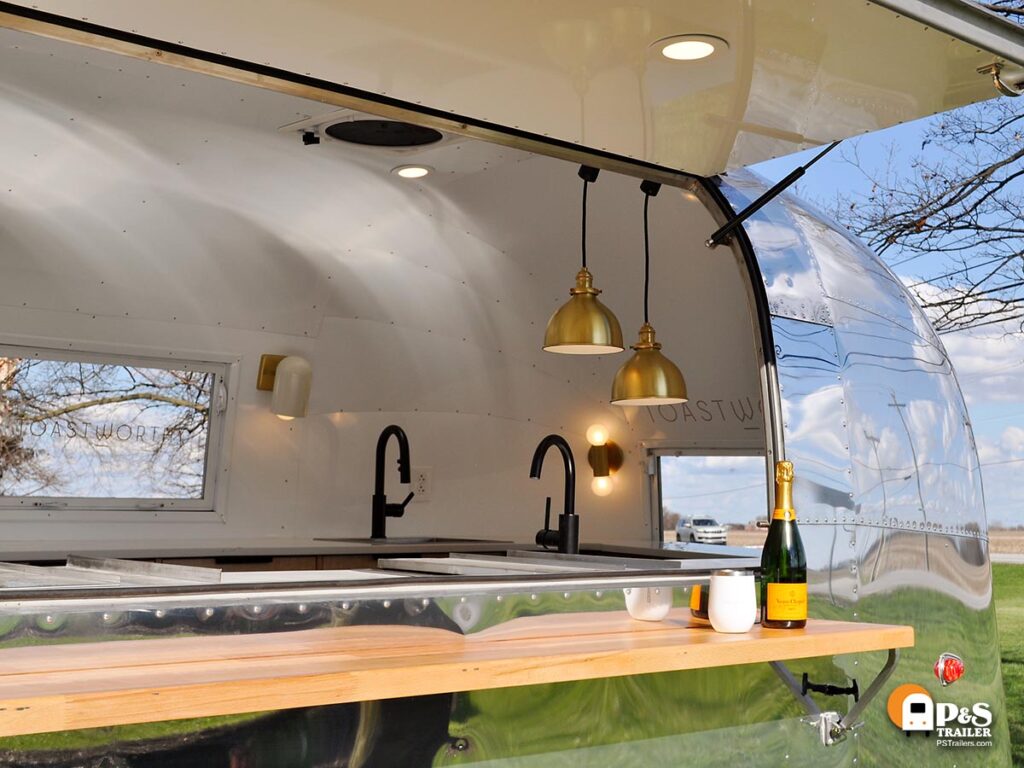
Stainless or wood serving shelves give customers a place to sit food and drinks while adding condiments or to grab their wallet and pay you!
FLEXIBLE TRAILER LAYOUT
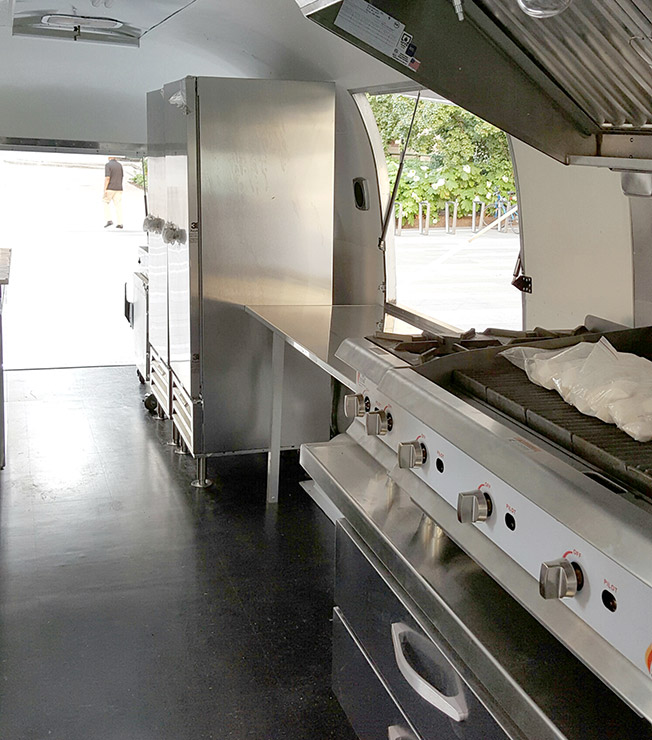
As you can see, a food trailer provides more flexibility in terms of size and design. The serving hatch window can be sized according to what you require. A smaller window allows more equipment space while larger windows let people watch while you create their lunch. A rear hatch can be added for loading product – rivaling even the best truck setup.
Both food trucks and food trailers have advantages and drawbacks. Choosing one over another comes down to your needs. If you want a lot of space, flexibility, and low maintenance, food trailers are the way to go. If you prefer everything self contained, food trucks may be a better option. Consider the costs too. A food truck is going to be more expensive and will require more repairs compared to food trailers.
Both food trucks and food trailers have advantages and drawbacks. Choosing one over another comes down to your needs. If you want a lot of space, flexibility, and low maintenance, food trailers are the way to go. If you prefer everything self contained, food trucks may be a better option. Consider the costs too. A food truck is going to be more expensive and will require more repairs compared to food trailers.
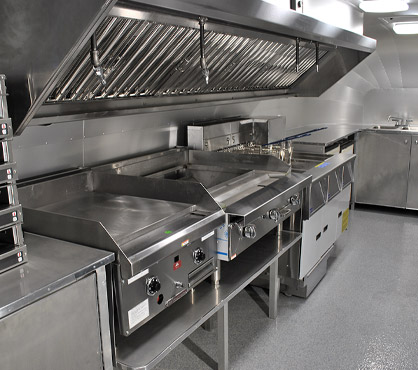
GENERATOR PLACEMENT
If there’s the possibility that you will be setting up somewhere where you can’t plug in to electrical power (shore power), then you will need a generator to power lights and some of your equipment even if it runs on propane.
Food truck generators are normally built-in, which will take up some space in the kitchen. A food trailer generator can be built-in to the trailer body, located on the tongue or, by extending the rear, be mounted behind the trailer. This means even more room for cooking equipment and the cook.

APPEARANCE IS EVERYTHING
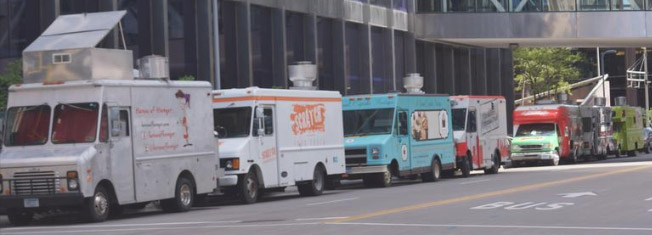
Food trucks are all basically the same – converted step vans – so they all look the same. That could also be said for box trailers that have been converted into food trailers. This is where an Airstream sets you apart from the crowd and draws them in. The classic curvature of riveted aluminum panels appeals to something inside of everyone.
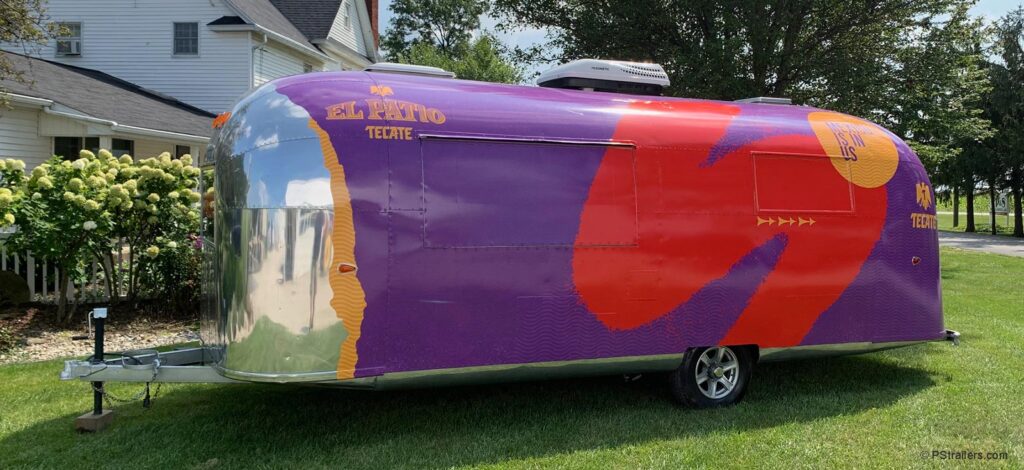
To stand out even more, add colorful banners, outdoor tables, and self-serve condiment and drink stations. More options for ‘drawing in the crowd’ include painting your Airstream or wrapping with graphics.
TO SUMMARIZE…
More space means a more comfortable working area for the cook. In fact, a food trailer can house a fully functional kitchen while many food trucks cannot. The generally big size of a food trailer allows it to serve more diners, more food options, thus more profit potential. Yes, I may sound a bit biased, but hey, I love Airstreams.
The regulations and licenses for food trucks are also more complicated than those of food trailers.

Anyone can open a food stand in a box on wheels – but an Airstream carries prestige. Airstreams are considered a high-end product – hence the WOW and envy factor. And you may be able to ‘upgrade’ for less than you think.
In the ever growing field of mobile food lineups you need to stand out from the competition!

Published: September 19, 2019 ~ Updated: December 6, 2022 ~ Author: Staff Writer
